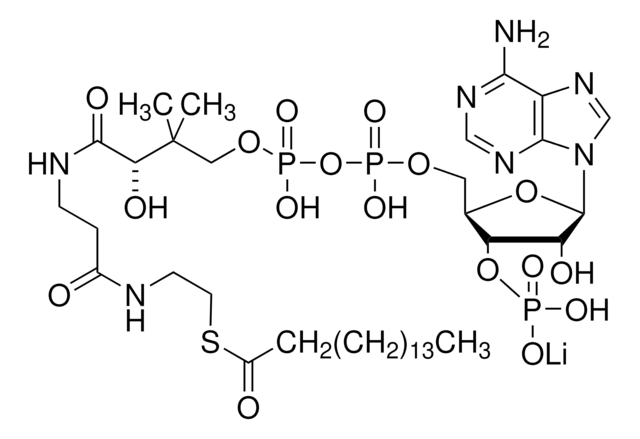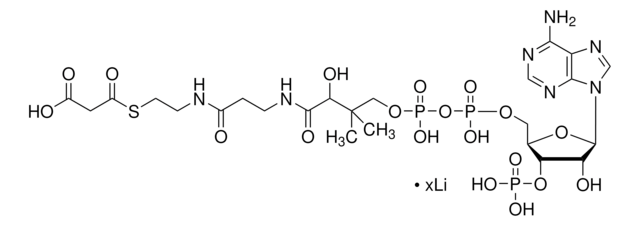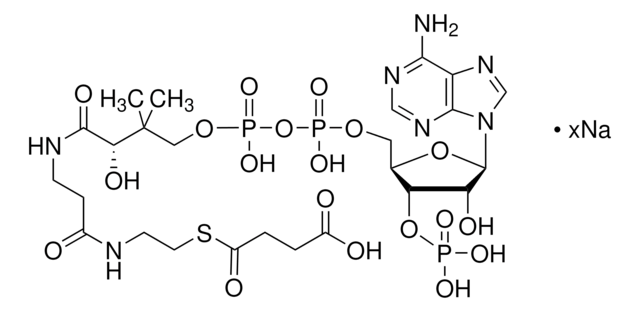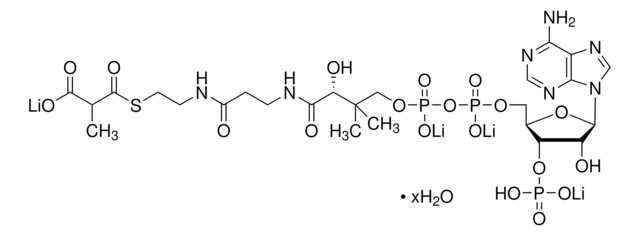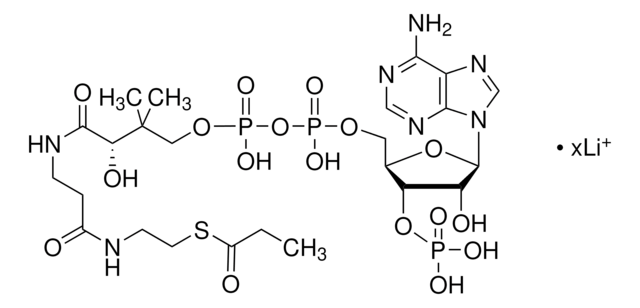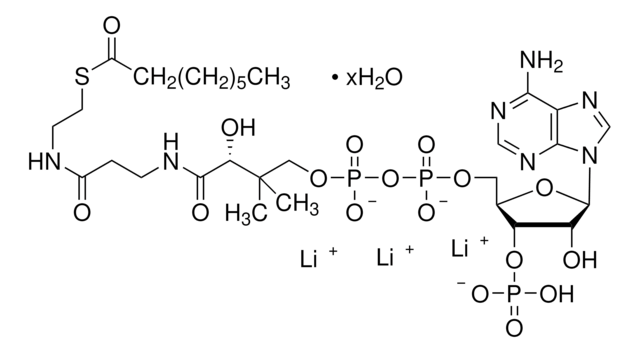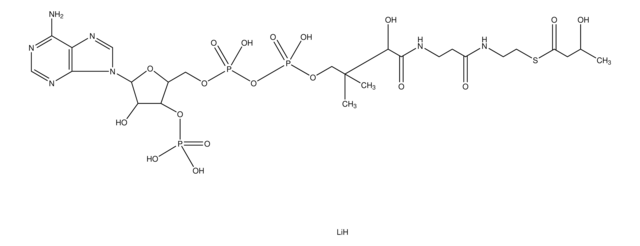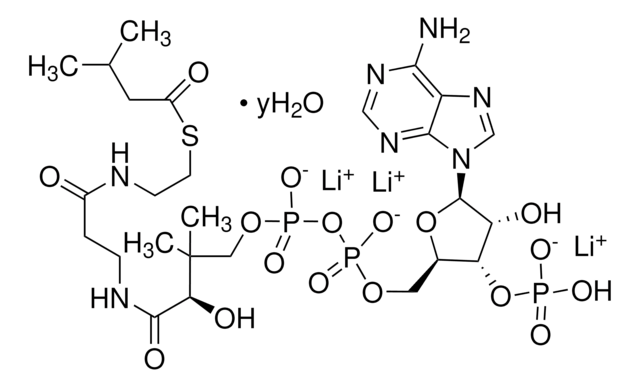Wichtige Dokumente
G9510
Glutaryl coenzyme A lithium salt
≥90%
Synonym(e):
Glutaryl CoA
About This Item
Empfohlene Produkte
Qualitätsniveau
Assay
≥90%
Lagertemp.
−20°C
SMILES String
[Li].CC(C)(COP(O)(=O)OP(O)(=O)OCC1OC(C(O)C1OP(O)(O)=O)n2cnc3c(N)ncnc23)C(O)C(=O)NCCC(=O)NCCSC(=O)CCCC(O)=O
InChI
1S/C26H42N7O19P3S/c1-26(2,21(39)24(40)29-7-6-15(34)28-8-9-56-17(37)5-3-4-16(35)36)11-49-55(46,47)52-54(44,45)48-10-14-20(51-53(41,42)43)19(38)25(50-14)33-13-32-18-22(27)30-12-31-23(18)33/h12-14,19-21,25,38-39H,3-11H2,1-2H3,(H,28,34)(H,29,40)(H,35,36)(H,44,45)(H,46,47)(H2,27,30,31)(H2,41,42,43)/t14-,19-,20-,21?,25-/m1/s1
InChIKey
SYKWLIJQEHRDNH-KRPIADGTSA-N
Allgemeine Beschreibung
Anwendung
- in comparative study of acylomes of β-Hydroxy β-methylglutaryl-CoA (HMG-CoA) and glutaryl-CoA by quantitative proteomics
- as a component of the assay buffer for in vitro biosensor activity experiments for FapR-NLuc proteins
- to test its effect on pyruvate kinase activity inhibition in a549 lysate
Signalwort
Warning
H-Sätze
Gefahreneinstufungen
Eye Irrit. 2 - Skin Irrit. 2 - STOT SE 3
Zielorgane
Respiratory system
Lagerklassenschlüssel
11 - Combustible Solids
WGK
WGK 3
Persönliche Schutzausrüstung
dust mask type N95 (US), Eyeshields, Gloves
Hier finden Sie alle aktuellen Versionen:
Besitzen Sie dieses Produkt bereits?
In der Dokumentenbibliothek finden Sie die Dokumentation zu den Produkten, die Sie kürzlich erworben haben.
Kunden haben sich ebenfalls angesehen
Unser Team von Wissenschaftlern verfügt über Erfahrung in allen Forschungsbereichen einschließlich Life Science, Materialwissenschaften, chemischer Synthese, Chromatographie, Analytik und vielen mehr..
Setzen Sie sich mit dem technischen Dienst in Verbindung.